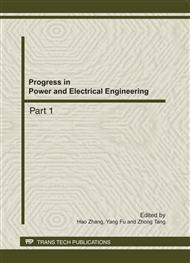p.1064
p.1068
p.1073
p.1077
p.1083
p.1088
p.1093
p.1099
p.1105
Risk Assessment of Power System Cascading Failure Considering Hidden Failures and Violation of Temperature
Abstract:
A method was proposed to throw light on the initial period of cascading failure that would be the best time to implement prediction and prevention. A more accurate hidden failure model which considers fault locations and protection schemes was created, as well as a conductor temperature-outage probability model depicting tree-to-line contacts happened in the blackout frequently. It reveals the physical process of cascading failure more clearly and demonstrates that differently located fault which may trigger different PEFD of hidden failures and different ambient situations can both result in different outage sequence.
Info:
Periodical:
Pages:
1083-1087
Citation:
Online since:
October 2011
Authors:
Price:
Сopyright:
© 2012 Trans Tech Publications Ltd. All Rights Reserved
Share:
Citation:


